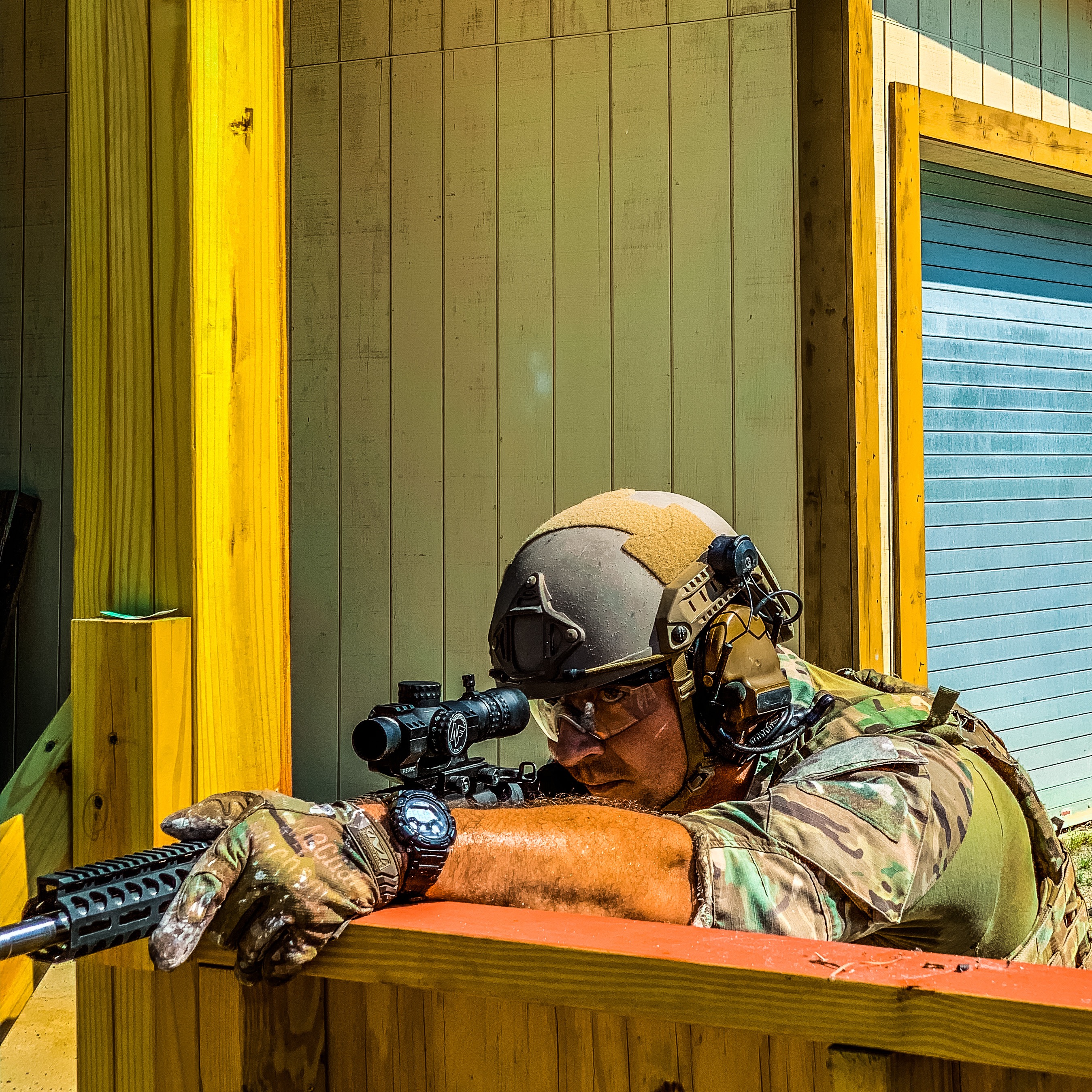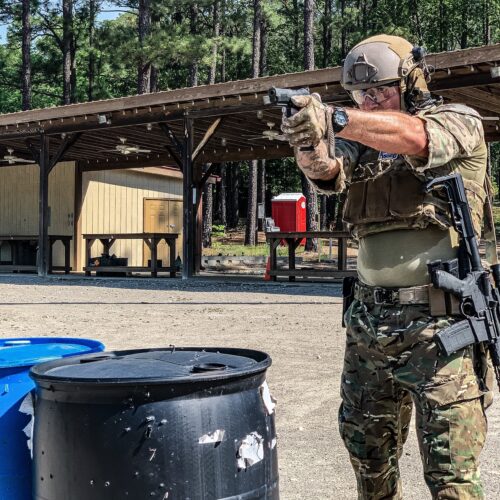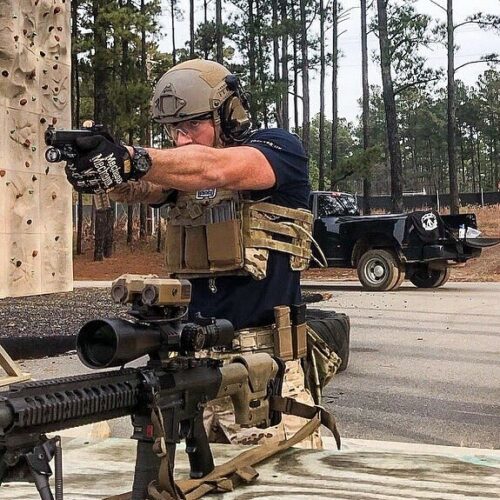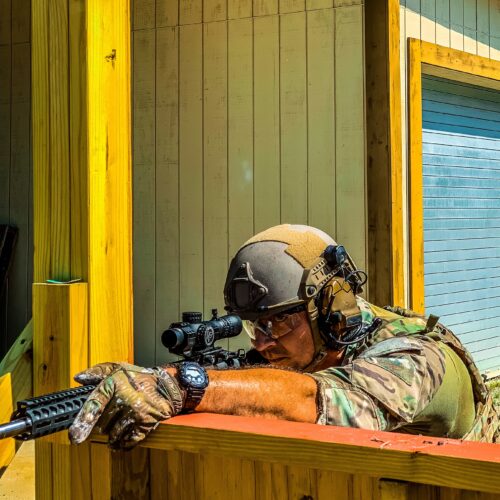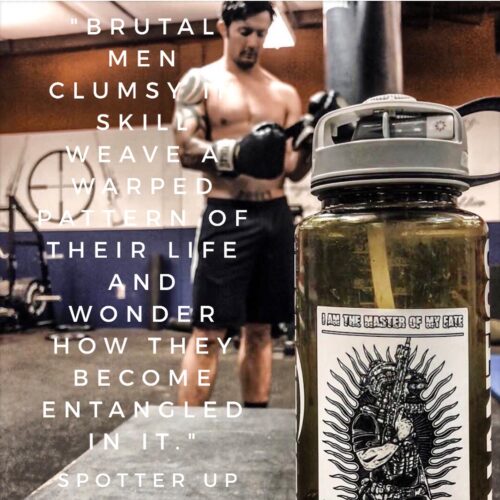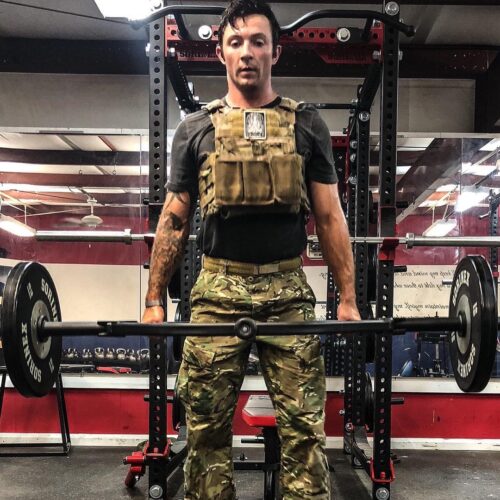FROM SUBJECT MATTER EXPERT TO STUDENT
In 2003, I was commissioned to develop a combative program for my Special Forces Operational Detachment Alpha. The team was recently stood up and we were in the process of developing standard operating procedures (SOPs), establishing team member roles and responsibilities and preparing for the team’s first combat deployment together. My team Sergeant gave me three months to develop a combative program that worked with patrolling, urban combat and Survival, Evasion, Resistance and Escape SOPs we were developing. I was chosen because of my martial arts and professional MMA background. At the time I was an accomplished No Holds Barred competitor, (Later grandfathered in as a professional MMA athlete). I had Black Belt rankings in Taekwondo and Shurite Kempo Karate, was an accomplished Collegiate style/ Folk and Greco Roman wrestler, had a Japanese Jiu-Jitsu Brown Belt some BJJ and was certified in LINE training combatives. I was also a former National level Karate Champion and world runner-up kickboxer. The Team Sergeant designated me as the subject Matter Expert and because of my training as a Non-commissioned Officer in the Special Forces Regiment it was expected that I would be able to put together a sound curriculum.
(Image of Green Beret Dan Posey)
This was at the height of (GWOT) the Global War On Terror. Money for military units to conduct training……ESPECIALLY Special Operations units was being thrown at us like it was going out of style. Units were being trained at the best tactical training facilities in the United States. They were being trained combatives by the Gracies themselves and it was costing the taxpayer millions. My Team Sergeant decided he wasn’t going to waste money and was going to get the most for the least. Each team member was designated as a subject matter expert in a field. That SME would be sent to study, learn and develop their unique field at a variety of different training schools and would then come back and train the team. It was during this time that I used a variety of opportunities that were afforded to me to develop a science and tactically based program of instruction tweaked specifically for my ODA.
What I learned in this process was far more than just about combatives. I had to tie combative techniques into every tactical situation we might come across. It had to be specific for the types of gear and equipment we wore into battle, but also had to be geared toward a potential enemy that may be equally geared and equipped as us. I was directed that the techniques must not require athletic prowess, they must implement gross motor function, be able to be executed with minimal training and in complete darkness. They had to include empty hand, prisoner control, edged weapon, rifle, pistol and impact weapon techniques. The program I was to train my team on had to be able to be executed in confined quarters like caves, small houses, buses, trains and planes. The program had to be used when someone is in a SERE situation. That means they are fatigued, malnourished and possibly even lacking sufficient clothing.
LESSONS LEARNED FROM SELF REFLECTION
This caused me to do some serious reflecting. I ultimately concluded that my program had to be modular, much like the soldier himself. This led me to research in several areas from physics to anatomy and even philosophy. Understanding a concept known as the “Whole man concept” became a crucial part of developing the Program of Instruction that I was tasked to complete. Going as far back as Sun Tzu or Socrates to study the ancient warrior philosophy on developing the complete man was important. Even in ancient times the wise men of the day understood that higher education was the key to developing the complete man. That “higher education” included a modular system where one is to learn of a variety of subjects from nature, to philosophy, the sciences and even physical development.
(Image of Green Beret Dan Posey)
Even today, the modern soldier or warrior requires knowledge and proficiency in numerous fields. They must have a grasp on the physical from fitness, to unarmed combat, primitive weapons and firearms. They must also understand more intellectual aspects of combat such as communications theory, intelligence collection and analysis, nature, survival, medical and intrapersonal. Today, we are understanding combat psychology even more. The rigors of the battlefield take their tolls on those who fight battles. Today’s warrior must understand Post Traumatic Stress, to recognize the characteristics and identify when their brothers in arms may be affected. They must understand how to mitigate the psychological tolls that are inflicted. They must understand how to win hearts and minds.
IMPLEMENTING THE WHOLE MAN CONCEPT
Having studied the history of the Spartans and books like the art of war by Sun Tzu and Sun Pin; having learned from Miyamoto Musashi’s Book of Five Rings and the lessons of Roger’s Rangers, I began to understand that my program of instruction must begin with the naked man. Turning the man himself into a smart weapon of sorts. From the state of weakness and nakedness, one must be able to gain weaponry and clothing. At which point impact, edged and flexible weaponry can be employed to gain a firearm. If one runs out of ammunition or a firearm malfunction the weapon itself must be used as a bludgeoning weapon or one must be able to transition back to the edged weapon and in the most extreme case empty hand.
(Image of Green Beret Dan Posey)
Developing an understanding of adult learning theory, neurolinguistics, the subconscious and the concepts of commonality of training and technique is equally important in the development of any system in that; by implementing these one is capable of creating a system which is easily learned and applied to a variety of scenarios requiring little mental processing and contemplation of application. There are over one million techniques and several combinations in which said techniques can be applied. However, by learning and training a handful of (LIKE) techniques that can be applied in numerous scenarios, this takes away response time thus making the training more fluid and instinctive. The example for those not familiar with combatives, Jiu-Jitsu, wrestling or martial arts, but are familiar with shooting is the High Workstation also known as the High port. Generally, when one clears a firearm, whether it’s a pistol, rifle or shotgun, they bring the weapon up into a high workstation where one can see the empty chamber and manipulate the weapon. Additionally, we come to the same position to load the firearm, fix malfunctions and even carry it safely. The benefit of this position is that; in this position one is not flagging another adjacent person and it is common. It becomes reflexive, when transporting the weapon, loading, unloading and fixing a malfunction.
STAY HUMBLE BECOME BETTER
Once again we see where having an understanding of a variety of concepts can be tied into a system that makes one faster and more efficient upon employment. The parts make up the whole and the whole is an amalgamation of its parts. This is the whole man concept. Within the relatively short period of time which I was tasked to develop my program for the team, I learned from a variety of masters in everything from grappling, edged weapons, impact weapons, anatomy and physiology. Perhaps the biggest gain from this experience was the self-study and reflection. It is the concept of learning and applying fundamentals, universal principles and the whole man concept that has acted as a force multiplier to every other aspect of my training and life in general. It is also the whole man philosophy that has reinforced humility and the idea that constant learning is what makes for a more complete life. By understanding the philosophy that every man is not complete in his own right and in order to be complete he must constantly seek improvement in areas such as emotional, interpersonal, professional, physical, financial, environmental and mental, one retains their humility and prevents stagnation.
(Image of Green Beret Dan Posey)
This philosophy can be applied to every single aspect of your life. For example; I am a firearms Instructor and avid shooter. I shoot a variety of different firearms and teach them regularly. It is important to me and my profession that I maintain a high degree of proficiency in manipulations and accuracy of the firearms I teach. It would be extremely easy to become complacent in my craft by simply accepting that I am more than adequate in basic manipulations of the weapon systems and I can regularly shoot a high qualification score. Students are in awe of my skill and I have credibility. However, when I go to train each time and I hit all my targets and meet all my time hacks and I feel as if I “did it again”. This does nothing for the advancement of my skillset. By training the same things the same way all the time, I am not challenging myself. I am not growing professionally, and I am not becoming better.
I like to train myself to the point where I identify my weaknesses, while at the same time enhancing my strengths. I like to try new drills that I am not comfortable with. To step outside my comfort zones. This is what makes one better. We discover that as good as we are there’s still room for improvement. We learn how to make that improvement; we embark on making the improvement and ultimately, we become better. Perhaps one of the biggest tools for self-improvement is the courage to fail, identify the cause of failure and then turn the failure into a victory. This is all part of self-reflection.
THE CONSUMMATE STUDENT
Of all the things that I learned from all my years in soldiering from my experience as an infantryman to my time as a Special Forces Soldier, a Protective Security Specialist and even as a lifelong martial artist is that staying humble is of the highest importance. Its not just knowing that there’s always someone out there who might be better, its about knowing your strengths and your weaknesses. Humility leads to growth; fiscally, mentally, physically, psychologically and emotionally. Perhaps the biggest lesson I’ve learned is that I’m not an expert. There are no “experts” only students. I’m always learning, I have always been a student of my craft and although I may teach others, I’m constantly learning. I learn from my students every day. I’ve learned that in order to be a good teacher and to be a highly skilled professional, I must strive to become the best student I can be. In closing this article; I would leave you with this……..strive to become the perfect student. By striving to become the best student, you will not overlook any aspect of that which you seek to train. You will remain humble and you will never become stagnate.
(Image of Green Beret Dan Posey)
*The views and opinions expressed on this website are solely those of the original authors and contributors. These views and opinions do not necessarily represent those of Spotter Up Magazine, the administrative staff, and/or any/all contributors to this site.
